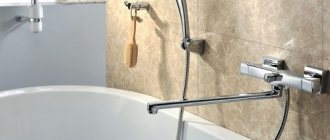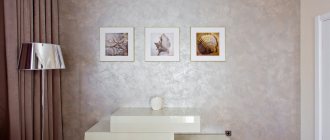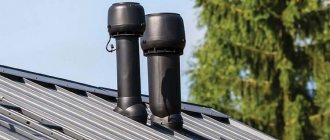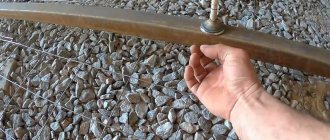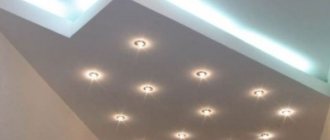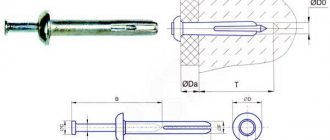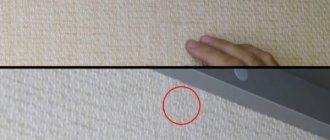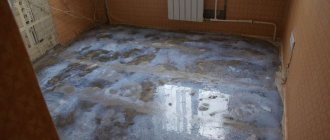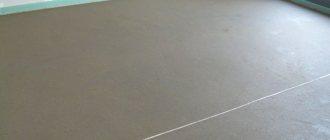- home
- Construction and renovation
- Plumbing
>
>
⬎
With this publication we are opening a series of articles on “piping in the bathroom”, where the issue of installing rough plumbing in the bathroom and toilet will be addressed. The first stage is the design and installation of the sewer system.
Why sewer? Yes, because all subsequent wiring depends on it. If water supply pipes are usually not difficult to extend to any point in the bathroom, then with sewer pipes it is a little more difficult. The presence or absence of boxes depends on the drain pipes; due to the need to maintain a slope towards the riser, you need to take into account all the little things, including the height and location of the bathtub. In other words, the entire layout of rough plumbing directly depends on the sewer pipes.
How to calculate the optimal sink height
According to building codes, sinks in residential areas must be installed at a height of 80-85 cm, but studies have shown that this is not the most convenient location.
In this case, most people have to bend over a lot to wash their hands, so it is better to be guided by the anthropometric parameters of men and women. Optimal washbasin installation height (from floor to side) for men, women and children
| Men | 94-102 cm |
| Women | 81-93 cm |
| Teenagers | 65-80 cm |
| Children | 40-60 cm |
If the sink will be used by several people of different ages and genders, it is better to choose an average height - 86-93 cm from the floor, and for children, install a special stand or a second washbasin. True, such an arrangement is only possible for models with the ability to adjust the height - for “tulip” type washbasins or those that cut into cabinets, SNiP parameters are usually used (80-85 cm).
In addition, there are certain technical standards that regulate the location of the sink in relation to other interior items.
| Interior element | Distance to sink, cm |
| 25 | |
| 30 | |
| 25 | |
| 30 | |
| 20 | |
| 60 | |
| 60 |
The distance from the side wall to the edge of the washbasin should be at least 20 cm, and the free zone should be about 70 cm (if the sink is installed in a niche, this figure increases to 90 cm).
Before installing a sink in the bathroom, you need to carefully measure the room, consider the optimal placement of plumbing fixtures and furniture, and then draw a detailed diagram of the interior indicating all measurements. When purchasing a model, it is important to pay attention to the fact that the model’s fastenings correspond to the water supply system. Another important aspect is the choice of a faucet, which is best purchased together with a sink, since they may have a hole for the faucet or be blind.
Tulip-type sinks are equipped with a base of standard length, but it is possible to change the height of the sink at your discretion (though only if its design and configuration are quite simple). To do this, you need to cut the base of the sink or install it on any stand - the main thing is that so that it is reliable and stable. When installing plumbing, it is necessary to take into account the distance between the drain and the siphon: if the siphon is located below the level of the drain, the use of the washbasin can lead to serious problems.
If you plan to place a washing machine under the sink, its height should not exceed 70 cm, since there must be a fairly large gap between the appliance and the washbasin
When spinning laundry, the machine may vibrate, and if its edge touches the edge of the washbasin, the plastic coating of the appliance or the sink itself may be damaged.
Installation of the sink must be done using a level, and it is best to use a laser level, as it allows you to carry out work more accurately.
The easiest option for installing a washbasin for beginners is the overhead model, as it does not require special skills and knowledge. If the dimensions of the room allow, you can install two washbasins side by side. The distance between them should be 94-109 cm, and between the taps - 90 cm.
The correct choice and installation of a sink is the guarantee that the plumbing fixtures will serve its owner faithfully for many years.
Tips and tricks
The difficulty of the installation process lies not in the lengthy work, but in the nuances, without which the toilet will quickly fail.
It is worth paying attention to the following recommendations from experts:
- It is better to install any toilet as close as possible to the sewer drain;
- the drain button is installed at a height of 1 meter;
- the distance between the floor and the drain pipe should be 22–23 cm;
- all markings must be accurate, it is best to make them bold and visible, measuring several times;
- before the plasterboard box is finally closed and lined, the entire system should be checked for leaks and odors, otherwise it will no longer be possible to get to them;
- the assembly of the metal frame must correspond to the horizontal and vertical levels; if necessary, you need to increase or decrease the slope using a device such as a building level;
- When tightening the nuts on a ceramic surface, you must be careful not to scratch the surface.
Thus, if you follow a certain sequence of actions and know some of the nuances, installing a wall-hung or floor-mounted toilet with your own hands will not be difficult, and choosing the right height will add comfort.
Source
Dimensions for installing bathtubs and showers
The shower cabin and bathtub are connected to the sewer using specially designed corrugations and pipes or tees with a diameter of 50 mm (see photo below). The level of the outlet from the wall of a pipe with a diameter of 50 mm should be 60 mm (from the level of the floor tiles to the axis of this pipe):
If this distance is higher, then you will have to build a podium for the bath.
By the way, the sequence of all repair measures depends on the type of bathtub. If the bathtub is ordinary, then first it is installed itself (details about installing a cast iron, acrylic or steel bathtub), and then the room is tiled. If the bathtub has a hydromassage device, then everything is done the other way around: the bathtub is installed last.
Causes of incorrect height ratio
The main reasons for the discrepancy between the levels of the tee and drain holes should be considered:
- errors made during installation or reconstruction of the system;
- the use of modern types of plumbing that require a different system configuration;
- re-equipment of kitchen or other premises, requiring installation of sewerage under the floor covering.
Owners of cafes or bars that open in unprepared premises often face similar problems. They constantly have to solve plumbing installation issues. For example, how to install a toilet if the sewerage system is higher than the drainage elements. In addition, many modern appliances are equipped with a floor outlet, which requires the assembly of a separate line.
Also read: Do-it-yourself homemade sewer pump - vacuum pump
Hydraulic testing of pipes
After all water and sewer pipes have been laid and all requirements for the placement of water outlets have been met, it is imperative to test the pipeline or, as experts call it, pressure testing.
Pressure testing must take place under increased pressure of 10 atmospheres using a special press. To do this, all water outlets, except the farthest one, are closed with plugs (they will later protect the pipes during finishing), and a ball valve is screwed into the farthest water outlet.
The system is filled with water, then shut off and a special crimping press is connected to the tap. The tap opens and a pressure of 10 atmospheres is injected into the pipeline using a press (all pressure testing machines are equipped with pressure gauges).
If the pressure does not drop within several hours, then the system can be considered sealed and can be safely walled up. If not, then you should find the leak, fix the problem and test again.
CONCLUSION
After laying the pipes and carrying out hydraulic tests, you can begin finishing – tiling the bathroom with ceramic tiles. The installation of plumbing fixtures should be carried out at the final stage.
Properly done piping in a bathroom using modern pipes and technologies will serve its owner for decades.
What dimensions should sewer outlets have to install different plumbing fixtures? Dimensions of sewer pipe outlets for plumbing connections
In previous articles, the rules that must be followed when installing plumbing were discussed. Now let’s figure out what sizes of sewer pipe outlets
.
The shower cabin and bathtub are connected to the sewer using specially designed corrugations and pipes or tees with a diameter of 50 mm (see photo below). The level of the outlet from the wall of a pipe with a diameter of 50 mm should be 60 mm (from the level of the floor tiles to the axis of this pipe):
If this distance is higher, then you will have to build a podium for the bath.
For a washbasin (sink), the height of the sewerage system from the floor (pipe outlet from the wall) should be 530...550 mm from the level of the clean floor to the axis of the pipe:
For an attached toilet – 180…190 mm (depending on the model):
For a wall-mounted toilet – 220…240 mm.
For a kitchen sink without a chopper – 300…450 mm.
For a kitchen sink with a chopper – 300…400 mm.
For washing machine and dishwasher – 600…700 mm.
(all distances are given from the level of the clean floor to the axis of the pipe)
Let me clarify: the above values are common, standard, but with today’s variety of companies and models, it is necessary to approach each case personally.
If you want to install some new, exclusive plumbing equipment, then you should first look at the technical map of installation and connection dimensions specifically for this equipment. This must be done earlier than supplying water and laying a drainage ditch - so as not to have to redo it, therefore it is better to purchase the desired plumbing fixtures in advance (if there is space for storage).
By the way, the sequence of all repair measures depends on the type of bathtub. If the bathtub is ordinary, then first it is installed itself, and then the room is tiled. If the bathtub has a hydromassage device, then everything is done the opposite: the bathtub is installed last.
How many bathrooms are needed? If we are talking about an apartment with an open plan, then first you need to impartially assess the dimensions of the place, as well as the locations of the risers to which all plumbing equipment will be connected. As a standard, it is better to equip two separate bathrooms - a guest and a master (again, if space allows). The guest room will only have a toilet and sink.
Naturally, residents living in houses with a standard layout do not have the ability to make several bathrooms, so you just need to decide the question: is it really necessary to bother with remodeling the bathroom or should you just limit yourself to replacing plumbing equipment and cosmetic repairs?
In the following article there is still little information about installing plumbing fixtures with your own hands.
in the light of water supply and sewerage design. Namely, about electronic sockets in the bathroom.
Accessories for installation of sewer pipes
Let's look at the various corners and joints for plastic sewer pipes used for installation.
Tee 90 degrees, diameters: 32, 40, 50, 110 mm. One of the main and frequently found spare parts. Used to organize drainage to the toilet and in other solutions. You often hear from “very experienced” plumbers that the toilet outlet should not enter a horizontal bench (pipe) at an angle of 90, otherwise there will be constant blockages. I can say with full responsibility: this is not so - in my practice there are a great many toilet connections with such a tee and during operation there is no hint of blockages.
In general, plumbers have a rule: if possible, do not make 90 angles on the “ditch”, it is better to put two 45 angles
. This is indeed true and it is worth adhering to this rule, however, in the case of a toilet, in 9 out of 10 cases it is technically more convenient to make the connection with a 90-degree tee. And there’s nothing wrong with that!
Transitional eccentric coupling 110-50 mm.
, popularly called “bottle”. Designed for transition from the 110th pipe to the 50th. In the bathroom sewer, it is used, as a rule, after organizing the outlet to the toilet - then the 110th diameter is unnecessary and installation continues with the fiftieth.
In the photo above we see the assembly: cross 110-110-110-50
and "bottle". This is how the outlet to the toilet is organized, the continuation of the D50 lounger to the left and the D50 outlet up. The upper outlet in the example above is used for the drain of the washing machine.
When purchasing crosspieces, you need to be careful: they differ in left and right.
In addition to the cross and bottle, there are many variations of transitions with 110 mm. by 50 mm. Most of these connectors are differentiated into left and right
. Some examples below:
Unlike tees 110 mm, for a diameter of 50 mm. and smaller is better to use smooth 45 degree angles - technically there is no obstacle to using two 45 angles instead of one 90.
Regardless of the pipe diameter (32, 40, 50 or 110 mm), 45 and 90 degree angles are not the only ones. There are angles of 30, 67, 87 degrees. Thanks to them, various installation problems are solved when the idea is to turn the pipes at an angle other than straight.
It is worth noting that recently a great many variations of angles and transitions have appeared; it is practically impossible to show all the existing ones.
White sewer pipes and fittings are increasingly common
colors. They fit perfectly with gray ones and differ only in color and wall thickness. The walls of these pipes are thicker, so the movement of wastewater is more silent.
Now let's discuss pipe fastening. Standardly, there are two types of brackets for fastening sewer pipes - adjustable and non-adjustable.
Non-adjustable plastic clips are used primarily for mounting on walls, since there is no possibility of creating a slope when mounting to the floor. Although a “savvy” master will find a way to attach the clips to the floor at different heights, if you have no choice, you can attach the clips to bars of different thicknesses.
The clamp sizes are standard, for pipes D32, D40, D50 and D110.
A pipe clamp with a pin gives more room for action: diameter adjustable within small limits, adjustable height of mounting on the floor or mounting on walls. These fasteners are very versatile and are suitable for any pipes, not just sewer ones. Dimensions suitable for plastic sewer:
«1»
(adjustable diameter 32-36 mm. for D32 mount)
«1¼»
(38-43 mm for mounting D32 in socket and for D40)
«1½»
(47-51 mm for socket D40 and D50)
«2»
(57-61 mm for D50 socket)
«4»
(110-116 mm for D110)
The studs for these clamps come in different lengths, with M6-M10 threads. Sometimes it is convenient to purchase a long hairpin separately and make the desired length yourself.
The fasteners should be placed near the sockets (or on the sockets directly). Usually one fastening per horizontal elbow is sufficient. When secured to a socket (as in the first photo of the publication), the assembled pipes will be difficult to disassemble without loosening the clamps, this must be taken into account.
Errors made during the installation process that can cause pipes to become clogged
Pipes from sinks, sinks and other plumbing fixtures must be mounted on a connection at a right angle of 90 degrees. If two devices are installed and the drains are drained towards each other, a blockage may occur in the tee of the pipe, which goes directly into the drain pipe. In this case, it makes no sense to clean the pipes from the side of the sink or washbasin using a spiral or hydrodynamically using a hose. If it comes to two sinks connected next to each other, then it is clear that from one sink the hose will pass to the second sink, but it will not be able to turn in the direction of the main drain pipe
One way or another, it will be quite difficult to clean the sewer. Another important mistake is that the drain pipe coming from the washbasin or sink is too high in the bathroom. As a result, the process of draining wastewater into the sewer pipe becomes difficult.
Many people decide to move pipes and plumbing fixtures, which include bathtubs, sinks and sinks, to another location that is not provided for in the project. If pipes are changed, the main problem may be that the outlet to the device will be rigidly tied to the outlet of the pipe in the riser, and the situation is very difficult to change. When connecting sinks and sinks, everything should be fine, since there is a certain height reserve, taking into account the fact that plumbing fixtures are suspended at a height of approximately 90 cm. But despite this, many inexperienced installers may not take into account or think through such a detail. It is easier to make a mistake with the height when connecting a bathtub and shower. Often the drain is located above the floor surface. It is quite difficult to lift a heavy bathtub yourself, so a simple solution is to install the drain pipe above the siphon outlet. Thus, the pipe is often laid without the required slope, which can also cause clogging of the sewer. You can often encounter a problem in which pipes that are supposed to be attached to the wall from the outside are not fixed correctly. Products may sag, and counterslopes and other practically irreparable cases often form. Of course, this does not in any way affect the proper functioning of the sewer system, but this feature can cause blockages, which will require frequent cleaning of the pipes.
Sewer outlet
Sewer outlets for plumbing fixtures are regulated by building codes. In order for each plumbing fixture to connect and work without the slightest problem, output and connection accuracy is required that is close to ideal, but practice often involves implementation with errors that have to be corrected. To comply with the standard locations of sewerage outlets in a private house, not only a good design and thoughtfulness of the exact location of each plumbing fixture is required - in what place and at what elevation this device will be installed. Having real equipment with all the components available and knowing the exact installation and output mark of each device is a “plumber’s dream.” The design of any sewer system, including the internal sewer system of a private house, must be thought out in such a way that each connected plumbing fixture has a minimum number of intermediate parts, which complicate the system and, as a result, reduce the reliability of this system. The ideal connection is a direct connection of each subsequent siphon after the plumbing fixture with its own smooth pipe with a pre-installed socket funnel of the sewer pipe. This may seem simple at first glance, but is not often easy to implement in practice.
Schemes and standards for the placement and installation of plumbing equipment and appliances
Previously, waste and overflows were used in bathrooms, but then they became widespread for sinks.
Flat sink drain
In the case where the sink needs to be installed above the washing machine, as a rule, it has a flat shape. This saves space and is the most suitable option in this case.
Such a sink, which is called a “water lily,” must have a special flat drain. It must be included in the package, since it is almost impossible to select it separately.
In addition, the “water lily” is a sink with a side drain. Its peculiarity is that the hole for water drainage is located on the side, and not at the bottom. This may cause some inconvenience as the water may not drain completely. To avoid siphon blockages, you will need to remove the liquid yourself by soaking it with a rag.
If you are willing to put up with these shortcomings, this will allow you to free up additional space in the bathroom.
Therefore, the choice of sink drain should be given special attention as it will ensure the efficient operation of the system. Plumbing measures in the home can be divided into three types:
Plumbing measures in the home can be divided into three types:
- Maintenance work, for example, fixing a leaking faucet or clearing a clogged shower drain;
- Work to replace pipes or broken equipment;
- Installation of new plumbing and pipeline communications.
Routine plumbing repairs are not regulated by any regulations or standards. However, measures to replace pipes or install new plumbing equipment will necessarily entail the need for coordination with the relevant organizations, which will require strict compliance with the rules for installing plumbing fixtures in accordance with current standards.
The motivation of bureaucrats is simple and clear:
- The transfer of utility networks and the installation of plumbing fixtures in a new location is called redevelopment, which may entail changes in the configuration and size of the room, requiring changes to the apartment’s registration certificate;
- Relocating plumbing fixtures is also a remodel.
Naturally, it is easier to do everything according to the letter of the law, then the preparation of technical documentation for housing will not cause problems.
- SNiP 2.08.01−89* “Residential buildings”;
- SNiP 2.04.05−91* “Heating, ventilation and air conditioning”;
- SNiP 3.05.01−85 “Internal sanitary systems”;
- SNiP 2.04.01−85* Internal water supply and sewerage of buildings.
The modern market of plumbing equipment is represented by a wide range of bathtubs, showers, sinks and sinks, toilets and bidets, valves and mixers. Despite all the variety of devices in terms of functionality and methods of controlling their operation, the methods of connecting household sanitary equipment with residential pipeline communications are completely unified and “submit” to the requirements of GOSTs and SNiPs.
It is recommended to install household plumbing after installation of utilities before finishing the room. Water connections for installing appliances must end with water sockets, which are a mandatory attribute of a home’s water supply system. Water outlets are specially rigidly fixed to protect the water supply system from vibration effects that occur during the operation of connected household plumbing fixtures.
The distance between the axes of the outlet fittings provided for hot and cold water must be strictly 15 cm.
Instead of sockets, it is allowed to use elbows, tees, couplings or manifolds for connecting mixers or other types of taps.
Another general requirement for the installation of plumbing fixtures is to ensure free access to the equipment, for which SNiP stipulates the size of the free space around each type of fixture (bathtub, washbasin, etc.).
The height of placement of plumbing fixtures is regulated in clause 3.11 and clause 3.15 of SNiP 3.05.01−85 “Internal sanitary systems”, and pipeline fittings to the devices are installed in accordance with clause 10.5 of SNiP 2.04.01−85* “Internal plumbing and sewerage of buildings."
Installation process
Before installing water supply and sewerage systems, you need to remove old pipe elements. Technical work is carried out in stages:
- the hot and cold water supply to the sink, bathtub, shower, and toilet is turned off;
- Next, remove the hose designed to supply water to the toilet tank. This process is carried out using an adjustable wrench;
- the toilet is removed - to do this you need to remove the bolts that hold it to the surface;
- The bathroom area is completely cleaned. It is necessary to remove all objects that will interfere with the laying of the sewer system networks - washing machine, bidet, sinks;
- then the old sink drain and other plumbing fixtures are dismantled. All pipe elements made of cast iron material can be broken with a hammer;
- The pipes are removed next to the riser. Carefully remove the pipe elements extending from the tee mounted in the riser. Using a grinder, you need to cut the pipe at a distance of 100 mm from the socket of the riser. The remains can be easily removed - you just need to rock them a little in the socket and then they will fall out on their own.
Dismantling old wiring
Dismantling cast iron pipes
However, if the residues do not fall out and are firmly stuck, then more effort will have to be spent on removing them. To do this, a pair of cuts are made with a grinder along the segment and up to the socket itself with a distance of 2 cm from each other. Next, a chisel is inserted into the cut, and it is tapped lightly with a hammer. Tapping is done until the pipe inside the tee cracks.
Next, the tee socket is cleaned. Before installing a new cuff on the bell, you should clean off any remaining lubricant. After installing the new cuff, pipe wiring is done.
Dimensions for connecting non-standard plumbing equipment
Let me clarify: the above values are common and standard, but with the current variety of manufacturers and models, it is necessary to approach them individually in each case.
If you intend to install some new, exclusive plumbing equipment, you should first look at the technical map of the installation and connection dimensions for this particular equipment. This needs to be done before supplying water and laying a sewer system - so as not to have to redo it, so it is better to purchase the desired plumbing fixtures in advance (if there is space for storage).
How to choose plumbing?
If the goal is to quickly install a standard toilet, then the choice will be floor-mounted toilets, where you won’t have to spend a lot of time on measurements or labor-intensive and lengthy installation work. The price for these models is much lower than non-suspended ones.
But if the goal is to embody modern design solutions, then hanging models will be an excellent choice.
When installing this type of toilet, you need to take into account many nuances, for example, the nozzle on the toilet bowl, because a difference of 2-3 cm that the nozzle can give usually leads to discomfort in using the model.
Sink drain
The sink drain is a necessary element for its installation. It performs important functions, namely: it protects the room from the smell of sewage and prevents the pipe from clogging with solid particles that penetrate through the hole in the sink.
How a sink drain works
The sink drain design consists of the following parts:
- curved siphon;
- sewer pipe.
When the water is flushed, the liquid enters the siphon, passes along the bend, rises up the curved elbow, and then falls down into the general drain. In this case, the water remains in the lower part of the curved elbow. This promotes the formation of a water seal, which prevents odors from entering the room. In addition, small objects and solid particles remain in the elbow part of the pipe, which can fall into the sink. To remove them, this part of the pipe is periodically removed and cleaned.
Sink drain diameter
Depending on the diameter of the sink drain, the siphon holes have the following dimensions:
- 32 mm - designed for washbasins with one hole and small diameter sewer pipes. This is the most common option;
- 40 mm – designed for large sewer pipes.
Sink waste and overflow
Recently, sink drains equipped with an overflow system have become very popular. The advantage of such designs is that the water does not go beyond the edges of the sink. A special overflow hole is installed at a certain level.
Prevention of unpleasant odors
Often unpleasant odors come from the sewer system. To avoid this, when installing plumbing in the bathroom, you should follow the following rules:
- lay the sewer system using wide pipes. Because in products of small diameter the pressure often changes, which is the first cause of the appearance of an unpleasant odor. But in wide products, during the movement of liquid, an air cushion is created, blocking the escape of odors to the surface;
- be sure to clean the pipes in a timely manner;
- Stagnation of waste and water at the site of the siphon can lead to rotting and the appearance of an unpleasant odor. Therefore, the siphon should be constantly cleaned of various wastes and liquids;
- Another reason is faulty ventilation. Stagnant air in the room can lead to the development of fungus and mold. Therefore, you need to monitor the operation of the ventilation and eliminate any malfunctions.
Wide pipes should be used for the bathroom drainage system
Errors made during the installation process that can cause pipes to become clogged
Pipes from sinks, sinks and other plumbing fixtures must be mounted on a connection at a right angle of 90 degrees. If two devices are installed and the drains are drained towards each other, a blockage may occur in the tee of the pipe, which goes directly into the drain pipe. In this case, it makes no sense to clean the pipes from the side of the sink or washbasin using a spiral or hydrodynamically using a hose. If it comes to two sinks connected next to each other, then it is clear that from one sink the hose will pass to the second sink, but it will not be able to turn in the direction of the main drain pipe
One way or another, it will be quite difficult to clean the sewer. Another important mistake is that the drain pipe coming from the washbasin or sink is too high in the bathroom. As a result, the process of draining wastewater into the sewer pipe becomes difficult.
Many people decide to move pipes and plumbing fixtures, which include bathtubs, sinks and sinks, to another location that is not provided for in the project. If pipes are changed, the main problem may be that the outlet to the device will be rigidly tied to the outlet of the pipe in the riser, and the situation is very difficult to change. When connecting sinks and sinks, everything should be fine, since there is a certain height reserve, taking into account the fact that plumbing fixtures are suspended at a height of approximately 90 cm. But despite this, many inexperienced installers may not take into account or think through such a detail. It is easier to make a mistake with the height when connecting a bathtub and shower. Often the drain is located above the floor surface. It is quite difficult to lift a heavy bathtub yourself, so a simple solution is to install the drain pipe above the siphon outlet. Thus, the pipe is often laid without the required slope, which can also cause clogging of the sewer. You can often encounter a problem in which pipes that are supposed to be attached to the wall from the outside are not fixed correctly. Products may sag, and counterslopes and other practically irreparable cases often form. Of course, this does not in any way affect the proper functioning of the sewer system, but this feature can cause blockages, which will require frequent cleaning of the pipes.
During the renovation process, a lot of questions arise. I will highlight the most common ones that arise when renovating bathrooms.
What is the slope of the sewer pipe?
– for a pipe with a diameter of 100 mm – at least 2 cm/meter – for a pipe with a diameter of 50 mm – at least 3 cm/meter
At what height is the sewage system installed...
– for a wall-hung toilet 160-190 mm (depending on the manufacturer and model), local fitting will give the most correct answer – for a wall-hung toilet 220-240 mm from the floor – for a shower cabin with a tray 60 mm – for a washbasin 500-550 mm – for bathtubs 100-150 mm – for kitchen sink 300-400 mm – for washing machine and dishwasher 500-650 mm
If, for technical reasons, the sewer outlets for the bathroom (shower stall, toilet) are made higher, then under the bathtub (shower stall, toilet) you can make a podium to the required height. Perhaps this situation will upset someone, but on the other hand, this podium can play a decorative character.
An example of a podium for a shower stall.
At what height is cold and hot water discharged...
– for a wall-mounted toilet 400-600 mm (depending on the water supply to the tank – bottom, side or rear), local fitting will give the most correct answer – for a shower cabin with a tray 1200 mm from the bottom of the tray, and shower heads – 2100-2250 mm (from the bottom of the watering can to the bottom of the tray) – for a bathtub 750-800 mm from the floor – for a washbasin 550-650 mm – for a kitchen sink 500-600 mm – for a washing machine and dishwasher 500-750 mm
Distance between water outlets...
– for a shower cabin and for a bathtub 150 mm from the central axes – for a washbasin and for a kitchen sink 100 mm (not so rigidly tied, as they are connected by flexible hoses)
The bathtub is mounted at a height of 600 mm, the washbasin is 850-900 mm. These sizes can be changed and depend on the height of family members. And they drag along with them the adjustment of other sizes (output of water outlets)
And do not forget that the floor level in toilets and bathrooms should be 15 - 20 mm below the floor level in adjacent rooms, or the rooms should be separated by a threshold. And also do not forget about waterproofing in the bathroom and toilet.
It is advisable to purchase all the plumbing before the installation of plumbing begins. communications. This will simplify the plumber’s task and reduce the risk of mistakes.
Recommendations for sewer installation
How to properly lay a sewer? A few important tips will help:
- during the installation of sewer system networks, it is necessary to use as few joints and turns as possible;
- for sinks, bathtubs, toilets, showers, it is better to use pipes with a diameter of 50-100 mm;
- the size of the angle of inclination varies from 1 to 2 cm;
- when installing sewerage systems with plastic pipes, you need to use a special lubricant;
- turning the pipe must consist of revision. Otherwise, waste will accumulate in the place where there is a turn;
- for strong fixation of plumbing fixtures with the material, it is necessary to use transition-type cuffs made of rubber material;
- the risers must be fixed from top to bottom using clamps;
- the color of pipes for cold and hot water supply should be different;
- the presence of a siphon in the sink or bathtub. Using a siphon, the drain works normally. And also the presence of a siphon eliminates all kinds of unpleasant odors from the sewer;
- cutting polypropylene pipes should be done using a hacksaw or grinder;
- If sockets are used when joining polypropylene pipes, then there is no need to use sealing.
The sewer system in the house has a special place and everyone chooses their own option as to how to choose a connection and outlet. Thanks to it, the normal operation of hot and cold water supply to sinks, showers and other plumbing fixtures and sewerage is ensured. Therefore, the installation of water supply and sewerage must consist of various nuances - material, color, quality of pipes, and there must also be a drain, couplings, connections, good sealing against leaks and the presence of a siphon. These are, of course, not all the technical characteristics of the sewer system. The main thing is that you do the sewerage yourself according to the rules, then the sewerage installation rules for which are described and the hot and cold water supply system will last a long time and will always delight you with its full-fledged work.
Siphon connection diagrams
Regardless of the design of bathtub sinks and methods of their installation, siphons are traditionally used:
- single-turn;
- double-turn;
- bottle.
The use of a one- or two-turn siphon is typical for “water lilies”, when it is necessary to free up as much free space under the sink as possible to accommodate a washing machine or other household items.
The name “single-double turn” was obtained due to the presence of one or two pipe bends in the circuit. Due to such bends, a hydraulic seal is created inside the line.
Another option, “bottle”, is the most common. It differs from the first in the absence of bends, the functions of which are performed by a special “bottle” with a drain pipe diverted from the top of the structure. This scheme is more convenient than the first when performing maintenance - cleaning the line in case of a blockage. At the bottom of the “bottle” there is a technical cap that can be easily unscrewed.
Recommended pipe diameters for sewage drainage
| Device | Diameter |
| Wash basin | From 40 mm |
| shower drain | 50-75 mm (depending on throughput) |
| Bath and shower | From 50 mm |
| Washing machine | Separate drain route - from 32 mm (open siphon), 40 mm (hidden siphon) |
| Toilet | 110 mm. |
An air valve is installed at the top point of the vertical riser, or a drain pipe is installed - after this, the sewerage installation in the bathroom is considered complete.
Marking, scoring and laying
After choosing the type of wiring, you can begin marking the pipeline routes. For polypropylene and copper pipes, all connections occur at right angles.
And for metal-plastic and cross-linked polyethylene pipes, the grooves can be laid with curves at the corners.
The grooves can be hollowed out with a hammer drill, cut with a wall chaser or a grinder with a diamond disc for stone. This is the dirtiest and dustiest stage of the work.
When laying pipes, it should be taken into account that it is customary to lay the hot pipe on top and the cold pipe on the bottom.
The size of the grooves should be such that the pipes can easily fit into the groove with thermal insulation made of foamed polyethylene placed on them, which, after walling, will compensate for the thermal expansion of the pipes.
In the space under the bathroom, it is not at all necessary to trench the wall for laying pipes; this place is already closed. To fasten pipes in grooves, you can use standard clips, but they take up a lot of space, so dowels and copper wire are often used.
In order to accurately align the water sockets of the bathtub mixer for all types of pipes, there are special mounting strips where the pipe outlets are located at a distance of 150 mm. It is recommended to use them.
When laying horizontal sections of sewer pipes, a slope of 3 cm per 1 meter of length should be observed.
When turning 90 degrees, it is better to use two 45-degree corners, with the exception of the exit to plumbing fixtures.
When assembling sewer pipes, do not forget about the cuffs, which should be lubricated with technical petroleum jelly.
Kitchen sink drain height
Typically, in an apartment, the height of the kitchen drain is the highest point of the horizontal drain pipe. The level of the sink bowl depends on the size of the furniture set and the owner’s preference. A kitchen sink (usually the last in the chain) is connected to one sewer pipe; a bathtub, a bathroom sink and a toilet are embedded in front of it.
It is important to maintain the slope of the branch so that the drains do not clog the pipe lumen or silt up. It is undesirable to make sharp 90° turns for the same reason.
Rules for the location of the sewer outlet in the kitchen under the sink:
- the greatest height is considered to be 50 cm;
- above the exit from the wall you need to place a siphon and the bowl itself;
- the height depends on the distance to the connection point;
- Hidden installation of a drainage system is rare; usually the pipes are hidden at the bottom of a furniture cabinet.
Sometimes the sink is built into an island-type unit - the sewer line runs through the floor. The system is planned in advance, at the stage of construction of floors.
Should I follow the standard?
Most builders, finishers and plumbers are well aware that the standard, optimal height of a bathroom sink is 85 cm.
These standards were developed and tested back in Soviet times, but are still observed, especially when arranging bathrooms in administrative and commercial buildings. When renovating a private apartment, if necessary, you can deviate from the generally accepted installation standard.
In conclusion, I would like to say that inside your apartment, and even more so in a private house, you have the right to install a sink inside the bathroom at any height convenient in specific conditions.
Whether or not to follow installation standards is up to you to decide. However, years of practice and scientific research confirm that, after all, a height of 85 cm is the most optimal option for the convenience of all family members, proven over the years.
Comfortable toilet height: what should it be?
The toilet room occupies not the last place in the house; the comfort and peace of mind of the consumer depends on its design. With the development of new technologies, some nuances of installation and fastening of the toilet have appeared, taking into account individual factors (size of the toilet room, consumer preferences). If you follow all the rules and correctly adjust the height of the toilet, you can create the most comfortable use of the plumbing fixtures.
At what height should the sink be installed?
An ordinary plumbing fixture in the form of a sink without any auxiliary accessories should be fixed at a height of about 85 cm. At a certain level, it is required to draw a horizontal line corresponding to the level of the highest boundary of the plumbing fixture.
If a support is provided or if the sink is in a cabinet, there is no need to determine the installation height, since it depends on the level of the support or the height of the cabinet.
Features of marking fixation points on the wall
Before installing the fasteners, you need to mark the points on the wall according to a special pattern. There are holes in the sink cavity for fasteners, which must coincide with the markings. The sink is applied to the wall, aligning its upper border with the line that was previously marked on the wall. In this way, the location of future mounting recesses in the wall is determined. It is better to carry out work processes together, as it is much more convenient. During the marking process, one worker will hold the sink at the level of the mark, and the second will fix from below the places where it is planned to fasten.
Installation of fasteners
Installation of fasteners should be done as follows:
- holes in the wall must be made according to clear markings;
- dowels are driven into them;
- special pins are screwed in for fastening.
In the process of connecting a sink in the bathroom and kitchen, the use of dowels and special pins is implied. You may also need nuts and plastic inserts supplied with the plumbing fixture.
When screwing in the studs, you need to monitor the depth of entry. The depth at which you can hang the sink and screw the nut is considered sufficient. In other words, the stud should protrude from the wall to the thickness of the device plus one and a half centimeters for the nut.
Which pipes to choose for sewerage
| Pipe type | Peculiarities |
| bays | There are no sockets, so connections are made with couplings. But there are no scraps or waste left. |
| In pieces | A piece of pipe is inserted into the socket of the previous one; fittings are used only when it is necessary to change the direction of drains, when combining horizontal lines, etc. |
Horizontal lines are mounted from 50 mm pipes, risers - from 100 mm.
For stable operation of the system after each bath, sink, washing machine, etc. (except for the toilet and shower) you need to install a gyroscope siphon. Siphons are installed by default in toilets and showers.
On curved sections, standard fittings without threads are used. It is recommended to install assemblies from pipe fittings rather than using ready-made ones.
Video tutorial on installation and connection of a sink on a pedestal
When installing the washbasin and connecting the system, consider a number of points:
When planning to connect a double sink, choose a special siphon that has an outlet to two pipes. The height of the sewer outlet under the bathroom sink should not exceed 500-550 mm
When connecting to a sewer, it is important to reliably seal all joints, otherwise unpleasant odors will appear in the bathroom over time.
If, when checking the tightness of the connections, you notice water leakage, remove the cuff and, after allowing all the elements to dry, lubricate the connecting cuff with sealant and “put” it in its original place.
Installing and connecting a sink is not particularly difficult, but quite labor-intensive work. At some stages of installation you cannot do without an assistant. But in general, if desired, any home craftsman can easily cope with installing a washbasin on his own.
| Name | Europe, mm | Russia, mm |
| Sink | 850 via VK | 850 via VK |
| Mirror over the sink | 1200 according to NK | — |
| Soap stand (sink) | 950-1000 according to Tax Code | — |
| Towel holder (sink) | 800 C | — |
| Toilet paper holder | 750-950 on VK | — |
| Spare toilet paper roll holder | 300 according to NK | — |
| Brush holder | 200 according to VK flasks | — |
| Wall-hung toilet | 400 via VK | — |
| Bidet | 400 via VK | — |
| Towel ring (bidet) | 800 C | — |
| Soap stand (bidet) | 700 C | — |
| Bath | 600 on VK | 600 on VK |
| Hand shower head (bathtub) / hose must not be in the bathtub / hose length 1.25 m / 200 mm from the vertical axis of the mixer | 500 for NK bracket from VK bath | — |
| Inlet for hose (bathtub) / with hose length 1.25 m / 200 mm from the vertical axis of the mixer | 700 C from VK baths | — |
| Soap stand (bath) | 100 according to NK from VK baths | — |
| Bath mixer | 300 C from VK bath | 800 N from the floor surface |
| Overhead shower head (shower cabin) | 2100-2250 according to NK from the surface of the floor covering | |
| Hand shower head on a bar (shower cabin) | 2095 via VK from the pallet area | — |
| Side shower nozzles (3 pcs.) | 600 / 1000 / 1400 N from the pallet platform | — |
| Side shower nozzles (2 pcs.) | 700 / 1300 N from the pallet platform | — |
| Shower faucet | 1200 N from the pallet platform | 1200 |
| Hose outlet (shower cabin) | 1400 N from the pallet platform | — |
| Pen | 1000 according to Tax Code from the pallet platform | — |
| Shower tray | — | 400 via VK |
- Unless otherwise stated, all values are based on the finished floor
. For example, the value “Sink: 850 mm on VK” contains an instruction to install it so that the upper edge of the sink (VK; top of the side) is at a height of 850 mm from the surface of the finished floor (covering). - NK
- the value is indicated along
the lower
edge. - VK
- the value is indicated at
the top
edge (at the top of the side). - C
- the value is given according to the mark of the corresponding
center
line (horizontal or vertical).
When did toilet paper appear in Russia?
We think that you will be interested in learning the history of toilet paper production in our country. Here's what information was published as part of TheQuestion project:
“The production of toilet paper in the USSR began only in 1968, when two English paper-making machines were installed at the Syassky pulp and paper mill (Leningrad region). The launch took place on November 3, 1969, but the first batch of hygiene products encountered zero interest from consumers: Soviet citizens simply did not know what it was intended for. Only after a large-scale advertising campaign (videos about toilet paper from the Syassky plant were shown before screenings in cinemas) did a real boom begin. The personal hygiene product, so familiar all over the world, immediately became in short supply in the USSR and until the 80s it could only be obtained by standing in a huge line.”
So, the need for a toilet paper holder arose relatively recently.
Depending on the slope angle of the sewer pipe:
- for a pipe with a diameter of 100 mm - at least 2 cm per meter
- for a pipe with a diameter of 50 mm - at least 3 cm per meter
At what height is the sewer line for plumbing fixtures installed?
For a wall-mounted toilet 160-190 mm (depending on the manufacturer and model), local fitting will give the most correct answer.
In other cases:
- for wall-hung toilet 220-240 mm from the floor
- for shower cabin with tray 60 mm
- for washbasin 500-550 mm
- for bath 100-150 mm
- for kitchen sink 300-400 mm
- for washing machine and dishwasher 600-700 mm
If, for technical reasons, the sewer outlets for the bathroom (shower stall, toilet) are made higher, then under the bathtub (shower stall, toilet) you can make a podium to the required height.
Regulatory Requirements
Regulatory requirements for the installation of pipeline fittings in accordance with SNiP 2.04.01 clause 10.5 are given in table No. 2.
Table 2. Regulatory requirements for the installation of pipeline fittings for cold and hot water supply
|
|
|
|
|
|
|
|
|
|
|
|
|
| ||
|
| ||
|
| ||
|
| ||
|
| ||
|
| ||
|
| ||
|
| ||
|
|
| |
|
|
| |
|
|
| |
|
|
| |
|
|
| |
|
|
|
|
|
|
| |
|
|
| |
|
|
|
|
|
|
|
|
|
|
|
|
|
| ||
|
| ||
|
| ||
|
| ||
|
|
|
|
|
| ||
|
| ||
|
|
When purchasing plumbing fixtures, the presence of invisible cracks is determined by ear by tapping the product, located on a wooden stand, with a wooden hammer weighing about 250 g. A product that has cracks makes a rattling sound when tapped.
The presence of nicks and scratches is determined visually by wiping the surface of the product with a cloth soaked in a 0.1% solution of methylene blue solution. If there are nicks or scratches, they are filled with a blue solution and are detected visually without the use of magnifying devices.
Source
Installation standards
According to SNiP 3.05.01, developed back in 1985, the standard height of a bathroom sink is 85 centimeters, while during installation a deviation of 20 mm up or down is allowed.
This value is a compromise between a washbasin level that is comfortable for use by men and women, who are traditionally slightly shorter. That is why most Russian and foreign manufacturers produce sinks on a pedestal and cabinets with built-in sinks with a height of 83-87 centimeters.
The correct choice of distance from the floor to the top edge of the sink has a significant impact on the comfort of using the plumbing fixture:
- How convenient it will be for a person to use them depends on whether the plumbing fixtures are installed correctly. If the sink is installed too low, you will have to bend over when washing, which can cause spinal pain. If the washbasin, on the contrary, is too high, then children will not be able to use it.
- The distance between the floor and the sink affects their connection to the water supply and sewerage system. As a rule, under the washbasin there is also a water meter, sometimes filters for cleaning and other devices, the installation of which takes up a lot of space. The need to install additional equipment must also be taken into account when choosing the washbasin level.
Mirror height
It is difficult to imagine a washstand in a bathroom without a mirror, which is installed separately or in a cabinet designed for storing hygiene items, detergents, medications, and cosmetics. Recommended mirror bottom height:
- 1100 - 1250 mm from the floor;
- 200 mm from the top of the washbasin;
- at eye level if a small mirror sheet is used.
When hanging a mirror, it is important to take into account the proportions; it is convenient for a person to look into it while standing straight, while it is advisable to remove the lower edge from the sink so that drops of water do not fall on it when washing.
Examples of mirror heights

